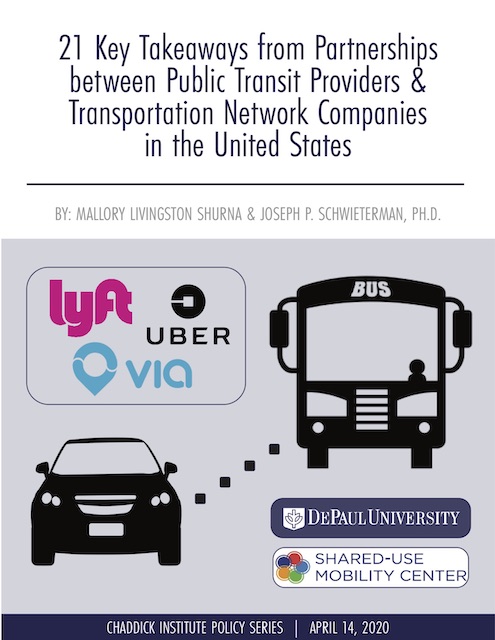A recent report from the Chaddick Institute, which is known to Antiplanner readers for its work on intercity buses, examines a dozen “partnerships” between transit agencies and ride-hailing companies. I put partnerships in quotation marks because I suspect these arrangements could easily prove predatory on one side or the other.
 Click image to download a copy of this 37-page report.
Click image to download a copy of this 37-page report.
The report notes that transit agencies have sought such partnerships for one of three reasons:
- To provide transit riders with a first or last mile service between transit stops and their actual origins or destinations;
- As an alternative to regular service in areas with low demand;
- As an alternative to paratransit services to seniors and/or disabled people.







